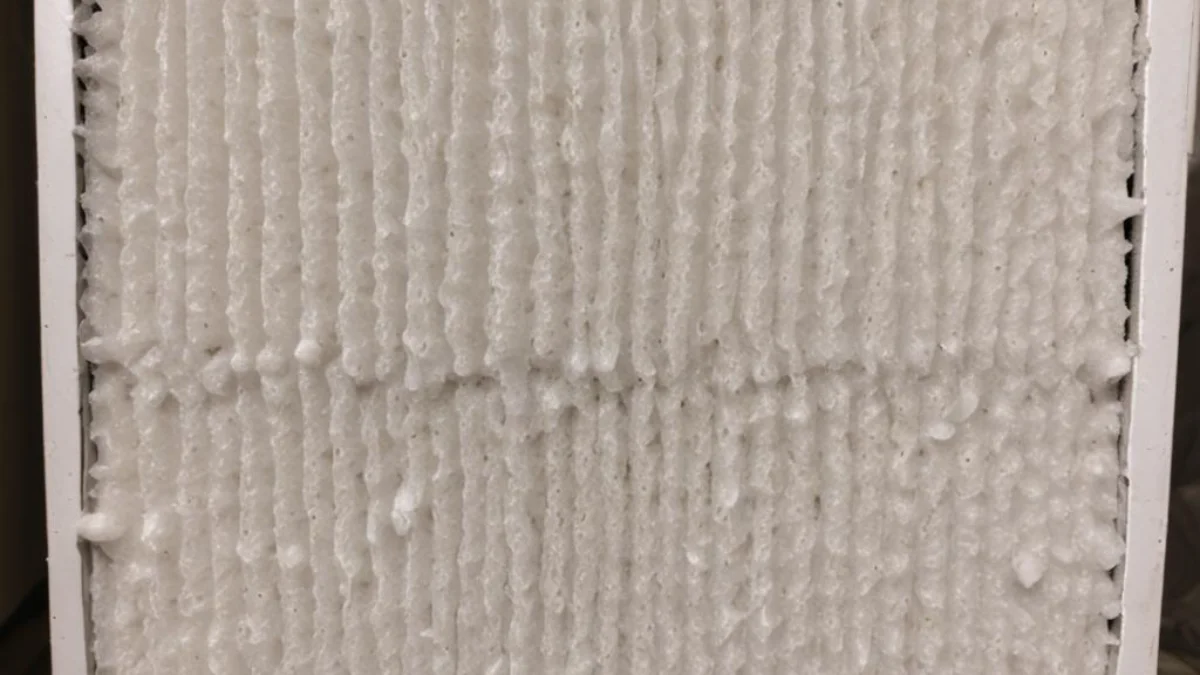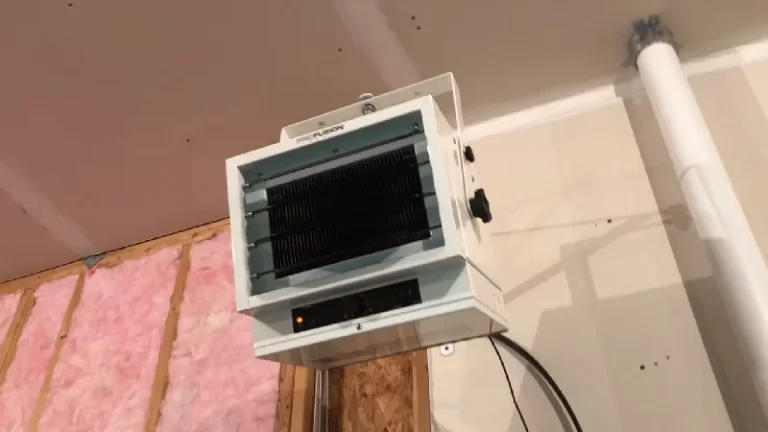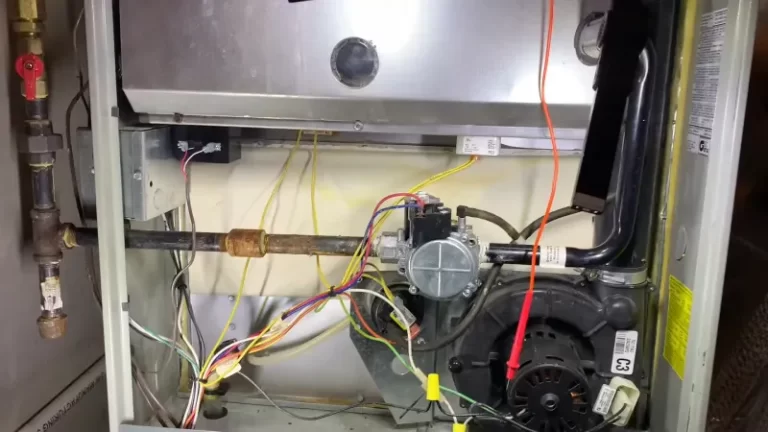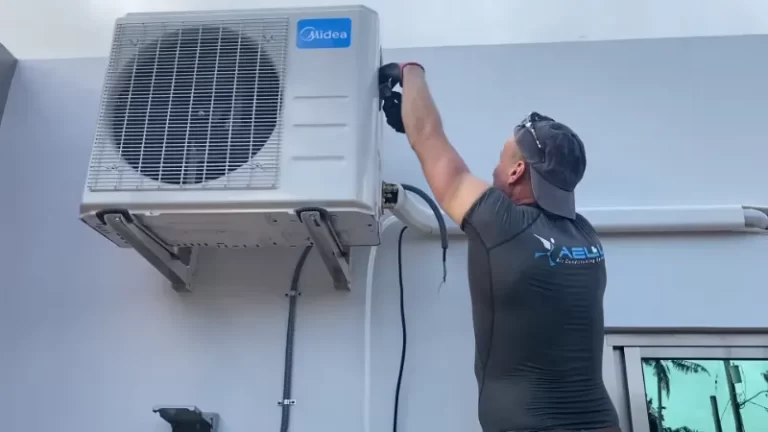How a Humidifier Can Clog Your Furnace Filter?: Reasons and Solutions
You diligently change your furnace filter, striving for clean indoor air and an efficient HVAC system. Yet, you find yourself replacing it far more often than recommended, each time discovering a stubborn, chalky white residue. This frustrating and costly cycle might have you questioning your furnace’s health, but the real culprit could be an unlikely suspect: your humidifier.
That’s right, the very device you use to combat dry winter air could be the reason your furnace is struggling. This mysterious white dust is not just a nuisance; it’s a sign of a bigger problem that can reduce your furnace’s efficiency, increase energy bills, and ultimately lead to costly repairs.
Understanding why this happens is the first step toward a lasting solution. We’ll delve into the science behind this common household issue and provide actionable steps to protect your furnace and improve your home’s air quality.
You'll Learn About
The Hidden Culprit: Why Your Humidifier Is Clogging Your Filter
The primary reason a humidifier clogs a furnace filter is the type of water being used, specifically hard water. Tap water contains dissolved minerals like calcium and magnesium, which are harmless to drink but problematic for certain types of humidifiers.
When these humidifiers disperse moisture into the air, they also broadcast these microscopic mineral particles. This fine, white dust then circulates through your home’s HVAC system, inevitably getting trapped by your furnace filter.
At first glance, the filter might not even look dirty in the traditional sense. However, this layer of mineral dust is dense enough to severely restrict airflow, forcing your furnace to work harder than it should.
The Problem with Ultrasonic and Impeller Humidifiers
Not all humidifiers are created equal when it comes to mineral dust. Ultrasonic and impeller (or “cool mist”) humidifiers are the most common offenders. These popular portable models work by using high-frequency vibrations or a rotating disc to break water into a fine mist that is then released into the room.
This process is highly effective at humidifying a space, but it doesn’t distinguish between water and the minerals within it. Consequently, the mineral content of your tap water is turned into an airborne powder that travels through your ducts and coats your furnace filter. The problem isn’t a flaw in the humidifier itself, but rather an incompatibility with hard water. In contrast, some other common humidifier issues might be more related to the furnace itself, like understanding what to do when you see steam coming out of the furnace.
Signs Your Humidifier is the Cause
If you’re unsure whether your humidifier is the source of your filter woes, look for these tell-tale signs. A fine white dust settling on furniture, electronics, and other surfaces is a major indicator. This is the same mineral residue that is clogging your filter.
You will also notice that you need to change your furnace filter much more frequently than the standard one to three months. A clogged filter will cause your furnace to work harder, which might manifest as reduced airflow from your vents or the system short-cycling. If you have an older unit, you might want to look into common Mueller Climatrol furnace issues and maintenance to rule out other problems.
Over time, this restricted airflow can put significant strain on your furnace’s components. One of the first parts to feel the stress is the blower motor. You might notice the furnace blower motor is slow to start, a clear sign of strain that should not be ignored.

The Damaging Effects of a Clogged Filter on Your Furnace
A clogged furnace filter is more than just an inconvenience. It’s a serious issue that can have a domino effect on your entire HVAC system, leading to reduced comfort, higher energy bills, and expensive breakdowns.
When the filter is blocked by mineral dust, it severely restricts the flow of air. This forces the furnace’s blower motor to work overtime to pull air through the system, leading to increased energy consumption and premature wear and tear on the motor.
This restricted airflow can also cause your furnace’s heat exchanger to overheat. When the heat exchanger gets too hot, a safety feature called the high-limit switch will shut the furnace down to prevent damage or a potential fire hazard. This results in the furnace “short cycling”—turning on and off frequently without completing a full heating cycle.
Long-Term Consequences for Your HVAC System
Consistent short cycling and an overworked blower motor will shorten the lifespan of your furnace. The constant strain can lead to component failure, resulting in unexpected and often costly repairs. In severe cases, it can even lead to the complete failure of the furnace, necessitating a full replacement.
Furthermore, the reduced airflow means your home isn’t being heated effectively. You may notice cold spots or find that the furnace runs constantly without ever reaching the desired temperature, all while your energy bills continue to climb.
Protecting your furnace starts with understanding the source of the problem and taking proactive steps to prevent it.
Actionable Solutions: How to Stop Humidifier Dust and Protect Your Furnace
Fortunately, you don’t have to choose between comfortable humidity levels and a healthy furnace. There are several effective strategies you can employ to mitigate or eliminate the white dust issue completely.
The best solution for you will depend on your type of humidifier, your home’s water quality, and your budget. Let’s explore the most practical and effective options.
Solution 1: Change the Water You Use
The simplest and most direct solution is to stop using tap water in your ultrasonic or cool mist humidifier. Instead, switch to distilled or demineralized water. Since this water has had the minerals removed, there is nothing to turn into white dust.
While this is a highly effective method, purchasing distilled water can become costly and inconvenient over a long winter season. It’s a great immediate fix while you consider more permanent solutions.
Using filtered water from a pitcher or faucet-mounted filter can also help, but these typically don’t remove all the dissolved minerals that cause the dust.
Solution 2: Regular and Rigorous Cleaning
Even when using better water, it’s crucial to clean your portable humidifier regularly—at least once a week. This prevents the growth of mold and bacteria in the water tank, which can also be dispersed into the air.
To clean your humidifier, unplug it and empty the tank. Use a solution of white vinegar and water to soak the tank for about an hour to dissolve any mineral buildup. Use a soft brush to scrub the interior surfaces, then rinse thoroughly with clean water before refilling.
Regular maintenance ensures your humidifier operates efficiently and doesn’t introduce other contaminants into your air.
Solution 3: Invest in a Water Softener or Filtration System
For a long-term, whole-home solution, consider installing a water softener or a whole-house water filtration system. A water softener removes hard minerals like calcium and magnesium from your water supply at the source.
This not only solves the humidifier dust problem but also provides numerous other benefits. It prevents scale buildup in your pipes and appliances, improves soap and detergent performance, and can even be better for your skin and hair.
While a significant upfront investment, a whole-home system is the most comprehensive solution for homes with very hard water.
Solution 4: Change Your Humidifier Type
If you’re committed to using tap water, your best bet is to switch to a type of humidifier that doesn’t produce mineral dust. Evaporative and steam vaporizers (warm mist) are excellent alternatives.
Evaporative humidifiers use a wick filter that absorbs water. A fan then blows air through the filter, causing the water to evaporate and add humidity to the air. The minerals are left behind on the wick filter, which needs to be cleaned or replaced periodically.
Steam vaporizers work by boiling water to create steam. This process also leaves minerals behind in the unit’s boiling chamber. This is often considered the cleanest method as the boiling process kills any bacteria or mold in the water.
| Humidifier Type | How It Works | Mineral Dust Risk (with Hard Water) | Maintenance Level |
|---|---|---|---|
| Ultrasonic | Uses high-frequency vibrations to create a fine mist. | High | Moderate (requires frequent cleaning and distilled water for best results). |
| Impeller (Cool Mist) | A rotating disc flings water at a diffuser, creating a mist. | High | Moderate (similar to ultrasonic). |
| Evaporative | A fan blows air through a wet wick filter. | Low | Moderate (wick filter requires regular replacement). |
| Steam Vaporizer (Warm Mist) | Heats water to produce steam. | Low | Moderate to High (requires regular cleaning to remove mineral scale). |
| Whole-House Bypass/Fan-Powered | Integrates with HVAC system, passing air over a wet evaporator pad. | Very Low | Low (requires annual pad replacement and service). |
Solution 5: Upgrade to a Whole-House Humidifier
The ultimate solution for consistent, low-maintenance home humidity is a whole-house humidifier. These units are installed directly into your HVAC system’s ductwork and provide balanced humidity throughout your entire home.
Most whole-house humidifiers are flow-through or bypass models. They work by trickling water over an evaporator pad. As air from your furnace blows over the pad, it picks up moisture. This process is a form of evaporation, so minerals are left on the pad and flushed down a drain, not blown into your air.
This eliminates the white dust problem entirely, protects your furnace filter, and offers superior comfort control. While it requires professional installation, the convenience and effectiveness are unmatched.
Maintaining Your Furnace in a Humidified Home
Even after you’ve solved the white dust problem, it’s essential to maintain a vigilant furnace care routine, especially when running a humidifier.
The most critical task is to check your furnace filter monthly and change it whenever it appears dirty. Even without mineral dust, running a humidifier can slightly increase the moisture content of the dust and debris your filter captures, potentially leading to quicker clogging.
A clean filter is your furnace’s first line of defense. It ensures proper airflow, maximizes efficiency, and prolongs the life of your HVAC system. Make it a non-negotiable part of your home maintenance schedule.
Know When to Call a Professional
If you’ve implemented these solutions and still experience furnace issues like short cycling, reduced airflow, or unusual noises, it’s time to call an HVAC professional. These could be signs of a more significant problem that a new filter can’t fix.
Regular professional maintenance is also key. An annual tune-up can catch small problems before they become big, expensive ones, ensuring your system runs safely and efficiently all winter long.
By understanding the link between your humidifier and your furnace filter, you can take control of your home’s air quality and protect your valuable HVAC investment. A little preventative action goes a long way in ensuring a warm, comfortable, and worry-free home.



